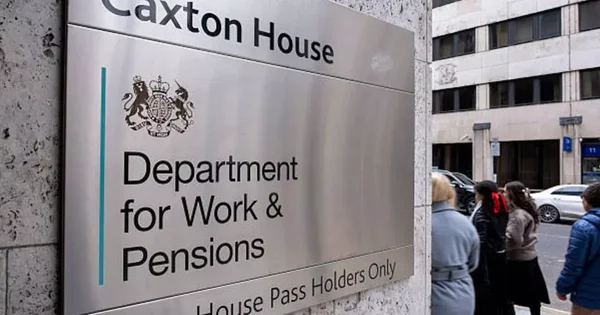Let's Breakdown
Understanding exactly how much stamp duty you’ll pay is essential. When buying a residential property, the rates vary depending on property value, first-time buyer status, and whether it’s an additional property.
Our Pie.tax app helps homebuyers calculate stamp duty quickly and see their exact stamp duty liability in seconds with our property tax calculator. Or if you’re just here to get to grips with it all, let’s break it down!
What is Stamp Duty?
Stamp Duty Land Tax (SDLT) is the tax you pay when buying property or land in England and Northern Ireland. Both UK residents and non-UK residents are subject to stamp duty, but non-UK residents may face additional surcharges compared to UK residents. It’s a substantial tax that often catches people by surprise during the buying process.
Scotland and Wales have their own versions with different rates. These are Land and Buildings Transaction Tax (LBTT) in Scotland and Land Transaction Tax (LTT) in Wales.
The tax applies to both freehold property and leasehold properties when purchasing a residential property in England. You’ll need to pay regardless of whether you’re buying outright or with a mortgage. Typically, the buyer pays stamp duty during the transaction.

How Much is Stamp Duty on a House?
Stamp duty is calculated on a sliding scale, with each portion of the property price falling into a specific stamp duty band. A different stamp duty rate applies to each band, not the entire amount.
For example, if you buy a house for £400,000, you’ll pay nothing on the first £250,000. You’ll pay a 5% stamp duty rate on the £150,000 that falls within the £250,001 to £400,000 stamp duty band, resulting in an amount of stamp duty paid of £7,500.
These rates were updated in September 2022. They might change in future Budgets, so it’s worth checking current rates. Properties worth more than £250,000 are subject to higher stamp duty rates according to the relevant bands.
First-Time Buyer Stamp Duty Relief
First-time buyers receive a special discount on stamp duty known as first time buyers relief. This relief can save you thousands of pounds when purchasing your first home.
If you are buying through a shared ownership scheme, different rules may apply to how stamp duty is calculated, and you may only pay based on the share you are purchasing.
Using our previous example, a first-time buyer purchasing that £400,000 property would pay £0. That’s a £7,500 saving compared to other buyers!
To qualify, you (and anyone you’re buying with) must never have owned property anywhere in the world before. If your first home costs more than £625,000, standard rates apply to the entire amount.
I remember helping my sister with her first property purchase last year. She was amased to discover she’d save over £5,000 thanks to this relief it made a significant difference to her deposit. These reliefs and schemes can significantly reduce stamp duty for eligible buyers.

Additional Property Stamp Duty
Buying a second home, investment property, holiday home, or rental property incurs a 3% surcharge. This surcharge applies on top of standard rates, so buyers of these types of properties pay more stamp duty, making additional properties significantly more expensive.
For that same £400,000 property as a second home, investment property, holiday home, or rental property, you’d pay 3% of £250,000 (£7,500) plus 8% of £150,000 (£12,000). That’s a total of £19,500 £12,000 more than a regular homebuyer!
This surcharge aims to discourage multiple property ownership, including second homes, investment properties, holiday homes, and rental properties. It’s designed to help first-time buyers by reducing competition from investors.
Stamp Duty vs. Transaction Tax in Different Parts of the UK
When it comes to buying property in the UK, it’s important to know that the tax you pay depends on where your new home is located. In England and Northern Ireland, buyers pay Stamp Duty Land Tax (SDLT) on residential property purchases. This duty land tax sdlt is what most people refer to as “stamp duty,” and it’s the system covered throughout most of this guide.
However, if you’re buying property in Scotland or Wales, different transaction taxes apply. Scotland uses Land and Buildings Transaction Tax (LBTT), while Wales has its own Land Transaction Tax (LTT). Although these taxes serve the same purpose as stamp duty charging a tax on the purchase of property or land their rates, bands, and rules can differ from those in England and Northern Ireland.
For example, the thresholds for when you start to pay tax, the stamp duty rates, and the way the tax is calculated may vary between regions. This means the amount of tax payable on a property purchase in Scotland or Wales could be higher or lower than for a similar property in England or Northern Ireland.
If you’re planning to buy in a different part of the UK, always check the latest information for that region’s transaction tax. Whether it’s stamp duty land tax, land transaction tax, or buildings transaction tax, understanding the local rules will help you budget accurately and avoid surprises on your stamp duty bill.

When and How to Pay Stamp Duty
You must ensure your stamp duty is paid within 14 days of completing your property purchase. Missing this deadline results in penalties starting at £100, which increase over time.
Most people ask their solicitor or conveyancer to handle the payment. They’ll submit the return to HMRC and ensure the stamp duty paid is correctly processed. In some cases, certain transactions may qualify for stamp duty exemptions, such as for specific types of properties or buyers.
You can add stamp duty to your mortgage if cash flow is tight. However, this means paying interest on it for the life of your loan, making it more expensive long-term.
It’s generally cheaper to pay stamp duty upfront if you can. Consider setting aside funds for this tax when saving for your deposit. In some transactions, buyers may also need to pay land tax in addition to stamp duty.
Stamp Duty Calculator Examples
Let’s look at a few more examples to see how the tax adds up in different scenarios using the existing stamp duty rates:
For a home mover purchasing a main residence with a property's value of £275,000, you’d pay £0 on the first £250,000 and 5% of £25,000 (£1,250) on the remainder. Your total stamp duty would be £1,250.
A property's value of £600,000 (main residence) would incur £0 on the first £250,000 and 5% of £350,000 (£17,500) on the remainder. That’s a total of £17,500 in stamp duty.
For a property's value of £1 million, you’d pay £0 on the first £250,000, 5% on the next £675,000 (£33,750), and 10% on the final £75,000 (£7,500). Your total stamp duty would be £41,250.
If you inherit a will property, stamp duty may not be due on the transfer.
These examples show how quickly stamp duty can add up. The tiered system means costs increase substantially once you cross certain thresholds.

Final Thoughts
Stamp duty represents a significant cost when buying property. It can add thousands to your purchase price, affecting your overall budget. First-time buyers should make the most of available relief. Investors need to factor in the substantial 3% surcharge on additional properties.
With rates changing periodically, always check the latest figures. This ensures you have accurate information before making offers on property. Consider property values near threshold boundaries carefully. Sometimes a slightly lower offer could save you thousands in stamp duty.
Pie tax: Simplifying how much is stamp duty Tax
Navigating stamp duty doesn't need to be complicated with the right tools. Our Pie tax app gives you instant stamp duty calculations based on your specific circumstances.
We automatically flag potential exemptions and reliefs you might qualify for. This ensures you never miss out on savings you're entitled to receive.
Our property tax dashboard updates whenever thresholds change. You'll always have the most current information at your fingertips.
We can prepare your SDLT return automatically, reducing errors. This helps ensure you meet the 14-day payment deadline without stress.
Why not explore the Pie tax app to see how it could help with your next property purchase?









